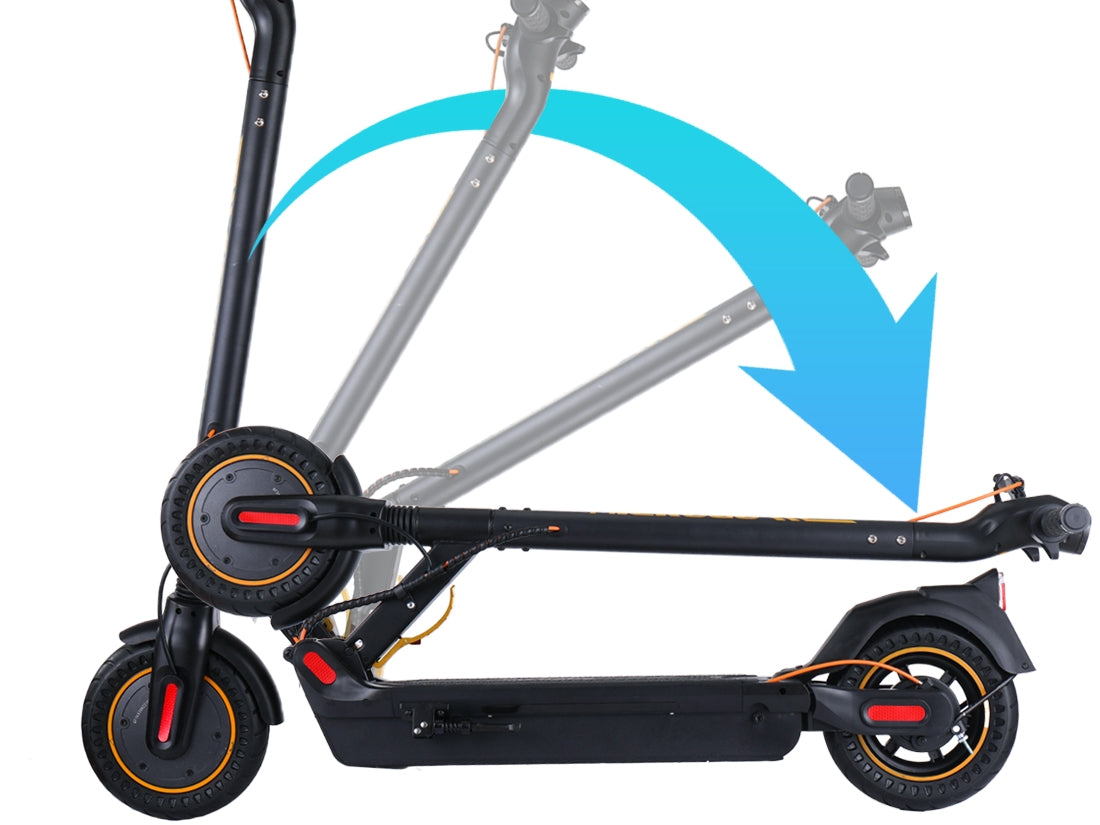Owning an e-scooter is both a fun and practical means of transportation. However, with ownership comes the responsibility of proper maintenance. By dedicating time and attention to regular upkeep, you can ensure your e-scooter serves you well for years to come, and you avoid any unnecessary repairs or costs. In this detailed guide, we will walk you through various aspects of e-scooter care, from basic inspections to proper storage, to ensure your ride is always ready for the road.
Inspect and Tighten Components Regularly
Every e-scooter rider can attest to the fact that traveling across different terrains exposes the scooter to various vibrational forces. The consistent buzzing and bumping during rides, no matter how minor, can incrementally cause a loosening effect on multiple components of the e-scooter. This isn't merely an issue of compromised performance-it's about the safety of the rider.
Handlebars and Stem
Central to the riding experience, the handlebars and stem are subjected to frequent movement and pressure. Over time, this can cause them to loosen, leading to wobbling or an unstable grip, which is the last thing any rider wants when navigating traffic or tricky pathways. At least once a week or after particularly rough rides, it's crucial to examine these components. If there's any noticeable play or unsettling movement, you'll want to tighten them. The tool of choice here is an Allen wrench. However, a word of caution: turning the screws too tightly can strain or damage the threads, so always aim for a firm yet non-forced turn.
Brakes
Quite arguably, the brakes are the e-scooter's most critical safety feature. It's imperative to examine the brake pads routinely, checking for any signs of wear. If the pads appear thin, uneven, or display a decrease in effectiveness, it's a clear signal for a replacement. Beyond the pads, the brake cables, often overlooked, are equally vital. They should be inspected for any signs of damage, fraying, or unnatural bending. These subtle damages can significantly impede braking efficiency.

Folding Mechanism
For those who own e-scooters equipped with a folding mechanism, this feature enhances portability but also adds another point of maintenance. Due to its regular folding and unfolding, the mechanism might become loose over time. Before every ride, ensure it securely locks into its riding position. Any hint of looseness is not just inconvenient-it's a hazard waiting to happen during rides.
Clean and Lubricate Moving Parts Regularly
Every ride, especially ones through unpredictable weather or across dirty paths, exposes the e-scooter to the elements. Dirt, specks of grime, moisture, and other environmental agents can get lodged in various parts of the scooter, affecting its performance and diminishing its lifespan.
Cleaning
An e-scooter's first line of defense is regular cleaning. After each ride, especially ones that take you through wet conditions or dirt trails, use a soft cloth dampened with water to wipe down the scooter's surface. This action removes most of the superficial dirt and prevents it from settling. For persistent stains or grime, a gentle detergent mixed with water can be used. Remember to avoid soaking any electrical parts and always dry the scooter thoroughly after cleaning.
Lubrication
As for moving parts, mere cleaning isn't enough. The chain or belt, pivot points, and other exposed moving components require lubrication. These parts experience constant friction during rides, and without proper lubrication, they can wear out prematurely. Opt for high-quality lubricants, preferably those specifically designed for electric scooters or at the very least, bicycles. By doing so, you not only ensure smooth operation but also add an additional layer of protection against wear and tear.
Keep Tires Inflated Properly
The tires of an e-scooter are more than just rubber that hits the road; they're the critical interface between the rider and the terrain. Proper tire care can dictate the quality of your ride and, more importantly, significantly impact safety.
Regular Inspection
Every so often, it's crucial to give your tires a thorough look-over. As the primary point of contact with ground surfaces, they're susceptible to all sorts of potential harm, from sharp objects that might cause punctures to general wear and tear. Key indicators to be alert for include visible cuts, embedded objects like shards of glass or metal, and uneven wear patterns. A tire's tread should wear evenly. If one section is more worn than another, or if there are noticeable deformities, it's a clear signal that it's time to consider a tire replacement.
Proper Inflation
Just like car tires, the inflation level of e-scooter tires can make a vast difference in ride quality. Not only does the right PSI (Pounds per Square Inch) provide a smoother ride, but it also affects the scooter's range. An under-inflated tire creates more rolling resistance, meaning the battery has to work harder and thus depletes faster. Conversely, over-inflation can lead to a bumpy ride and increased risk of punctures. The trick is to find the Goldilocks zone of inflation: not too high, not too low. This is where a tire pressure gauge becomes invaluable. By checking the pressure and adjusting it to the recommended PSI-often listed on the tire's sidewall or in the scooter's user manual-you ensure an optimal balance of efficiency and safety.

Charge The Battery Properly
The battery isn't just a component of the e-scooter-it's its lifeblood. An e-scooter's functionality, range, and overall performance are directly tied to the health and charge level of its battery.
Avoid Draining Fully
An age-old myth surrounding batteries is the necessity to let them drain fully before recharging. While this might have held true for older battery technologies, it's largely irrelevant for modern e-scooter batteries. In fact, allowing them to drain entirely can sometimes be detrimental. It's recommended to initiate a recharge once the battery drops to around 20% of its capacity. This approach tends to extend the battery's overall lifespan.
Use the Correct Charger
With a plethora of electronic devices in our lives, it might be tempting to use the same charger for multiple devices. However, this can be a grave mistake when it comes to e-scooters. Always use the charger that came with your scooter. Third-party chargers, even if they fit, might not deliver the right voltage or current, leading to inefficient charging, potential damage, or even safety hazards.
Store in Cool Conditions
Batteries, by their nature, are reactive. They don't take kindly to extreme temperatures. Prolonged exposure to heat can deteriorate a battery's health, reduce its capacity, and shorten its overall lifespan. If you find yourself not using your e-scooter for a while, especially during the hotter months, it's prudent to store the electric scooter battery (and if possible, the entire scooter) in a cool, dry place, away from direct sunlight.
Store Your E-Scooter Correctly
Storing your electric scooter properly is important when not in use. Keep it sheltered indoors or, if that's not feasible, under a protective covering to shield it from unpredictable weather. Moisture from environment can be damaging, potentially causing rust to the scooter's electrical system; thus, if your scooter gets wet, dry it meticulously prior to storing.
Ideally, to maintain the alignment of its components and prevent any undue strain on any specific part, keep your e-scooter upright, either on a stand or leaning securely against a stable surface.
Here's to many more journeys on your two-wheeled companion!
Read More
- Electric Scooter Repair: Tips and Guide – Microgo Electric Scooters
- Electric Scooters: Daily Travel Benefits & Future Role – Microgo Electric Scooters
- Beginner's Guide to Riding an Electric Scooter – Microgo Electric Scooters
- Electric Scooter Troubleshooting: Fix Common Problems – Microgo Electric Scooters
- Electric Scooters: Daily Travel Benefits & Future Role – Microgo Electric Scooters



Leave a comment
This site is protected by reCAPTCHA and the Google Privacy Policy and Terms of Service apply.